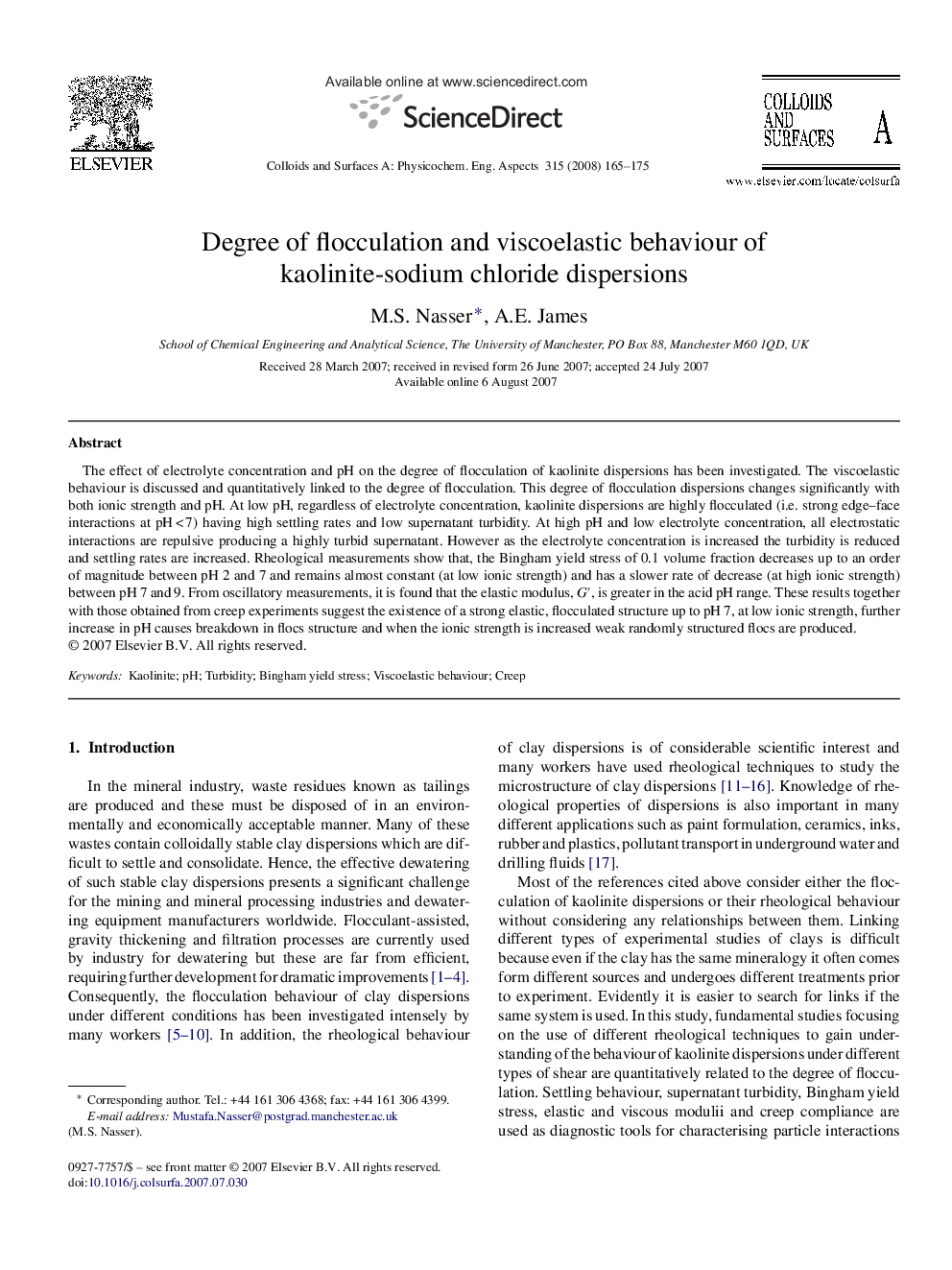| Article ID | Journal | Published Year | Pages | File Type |
|---|---|---|---|---|
| 597155 | Colloids and Surfaces A: Physicochemical and Engineering Aspects | 2008 | 11 Pages |
The effect of electrolyte concentration and pH on the degree of flocculation of kaolinite dispersions has been investigated. The viscoelastic behaviour is discussed and quantitatively linked to the degree of flocculation. This degree of flocculation dispersions changes significantly with both ionic strength and pH. At low pH, regardless of electrolyte concentration, kaolinite dispersions are highly flocculated (i.e. strong edge–face interactions at pH < 7) having high settling rates and low supernatant turbidity. At high pH and low electrolyte concentration, all electrostatic interactions are repulsive producing a highly turbid supernatant. However as the electrolyte concentration is increased the turbidity is reduced and settling rates are increased. Rheological measurements show that, the Bingham yield stress of 0.1 volume fraction decreases up to an order of magnitude between pH 2 and 7 and remains almost constant (at low ionic strength) and has a slower rate of decrease (at high ionic strength) between pH 7 and 9. From oscillatory measurements, it is found that the elastic modulus, G′, is greater in the acid pH range. These results together with those obtained from creep experiments suggest the existence of a strong elastic, flocculated structure up to pH 7, at low ionic strength, further increase in pH causes breakdown in flocs structure and when the ionic strength is increased weak randomly structured flocs are produced.
